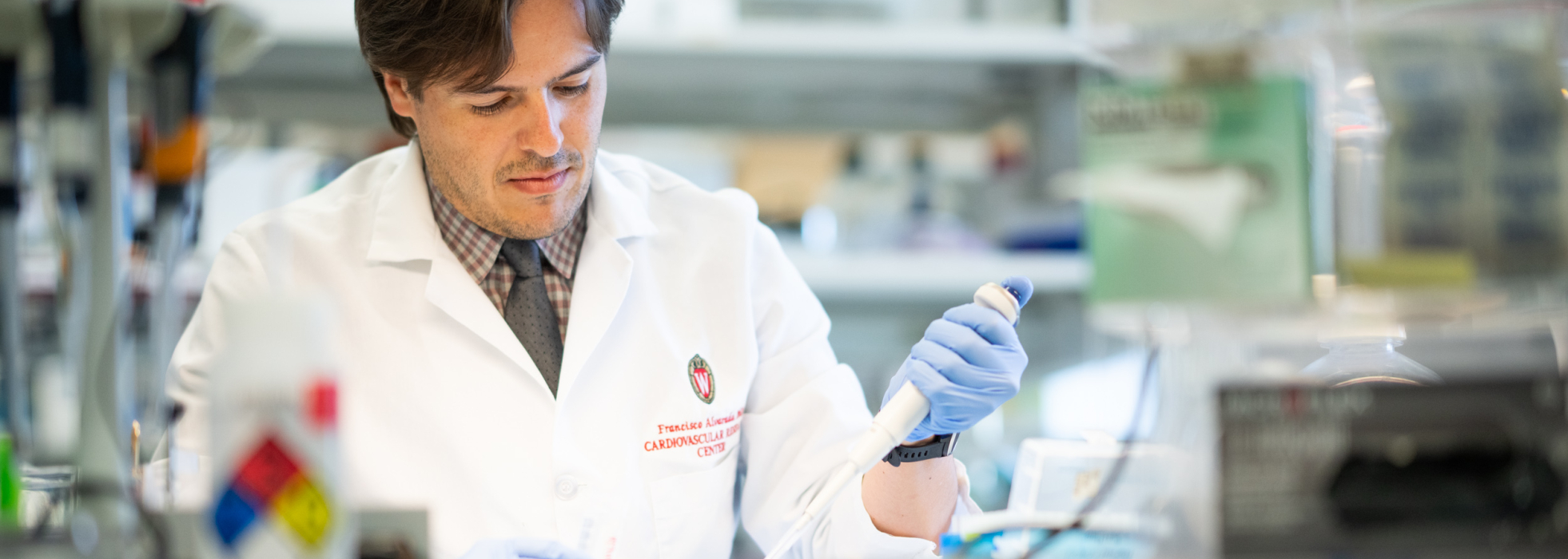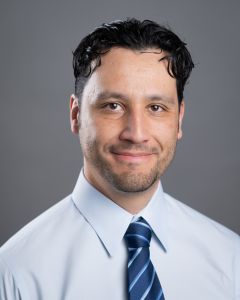Regulating Cardiac Ion Channels
Francisco Alvarado, PharmD, PhD, is an NIH-funded basic and translational investigator in cellular and molecular cardiac electrophysiology.
His research uses unique animal models and state-of-the-art technology to understand the mechanisms underlying cardiac arrhythmia and heart failure with the goal of developing new therapies to treat patients.

Calcium-Dependent Arrhythmias and Structural Cardiomyopathies
Dr. Alvarado's research aims to understand the mechanisms of heart disease and to develop safe and effective treatments that improve the life of patients.
His lab's primary focus is the regulation of cardiac ion channels, with an emphasis on diseases arising from their dysfunction, especially calcium-dependent arrhythmias and structural cardiomyopathies. Calcium is required for heart function through a process called excitation-contraction coupling; yet, dysregulation of calcium homeostasis is known to participate in heart disease.
Dr. Alvarado's team applies state-of-the art imaging, electrophysiology and cell biology tools to understand how mutations affecting proteins involved in excitation-contraction coupling, such as ryanodine receptor 2, the major intracellular calcium channel in the heart, participate in the development of disease.
Research Team
Scientist III
Graduate Student
Scientist II
Postdoctoral Fellow
Undergraduate Students
- Hayden Pattridge, Hilldale Fellow and Cardiovascular Research Center (CVRC) Research Fellow
- Achal Gowda
- Isabel Garay
- Sam Schenkenberg

The Alvarado Lab is always looking to recruit motivated undergraduate and graduate students and postdocs interested in cardiac research.
Please send your CV and a brief description of your research experience and interests to Dr. Alvarado.
Active Projects
- Calcium-Dependent Arrhythmias in Heart Disease
- Image

Calcium waves in cardiomyocytes isolated from two mouse models expressing ryanodine receptor 2 channels harboring mutations identified in human patients.
- Regulation of Cardiac Function by Sympathetic Function
- Image

Mouse cardiomyocytes stained for total ryanodine receptor 2 (RyR2, green), RyR2 channels phosphorylated at S2030 (red) and a nuclear dye (DAPI, blue).
- Modulators of Ryanodine Receptor 2 to Treat Disease
- Image

Cartoon representation of RyR2 bound to the channel agonists caffeine, ATP and calcium.
Funding Support
Dr. Alvarado is a Centennial Scholar in the University of Wisconsin School of Medicine and Public Health. His research is funded by the National Heart Lung and Blood Institute of the National Institutes of Health.





